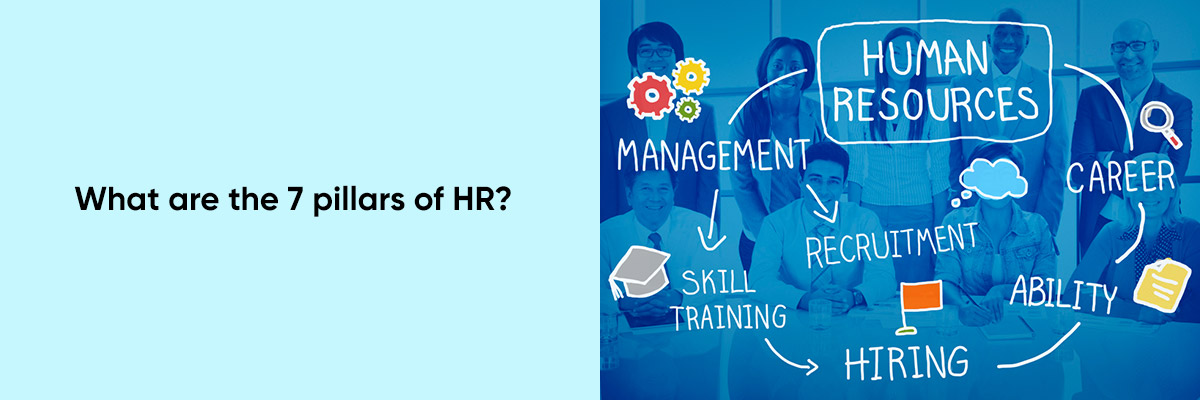The human resources department serves as the backbone of any organization; it organizes, manages, nurtures, and develops its employees. There are seven crucial pillars that HR uses to strengthen this fundamental function of managing people.
In this blog, we will discuss these 7 important pillars that every HR and HR department has to do.



The 7 pillars of human resources:
- Selection and recruitment:
At the heart of HR lies the task of recruiting and selecting individuals who align with the company’s values, culture, and objectives. As part of this pillar, job descriptions are crafted, candidates are sourced, interviews are conducted, and then the best candidate is chosen. The recruitment process ensures that the organization has a robust workforce that drives the organization’s success.
- Training and Development:
It is crucial for employees and the company as a whole to continue learning and developing. To enhance skill sets, boost performance, and align individual goals with organizational objectives, HR professionals develop training programs, workshops, and initiatives. Keeping employees competitive and adaptable in an ever-changing business landscape is a key component of this pillar.
- Employee Relations:
Fostering healthy relationships among employees and maintaining a positive work environment fall under this pillar. HR is responsible for conflict resolution, employee grievances, and ensuring fair treatment. This pillar fosters a culture of trust and mutual respect, enhancing productivity and employee satisfaction in the workplace.
- Compensation and Benefits:
Fair compensation and attractive benefits packages are essential for attracting and retaining top talent. HR professionals analyze market trends, design competitive salary structures, and administer benefits such as healthcare, retirement plans, and incentives. This pillar aims to keep employees motivated and satisfied while ensuring the organization remains competitive in the talent market.
- Performance Management:
A key component of driving growth and productivity is monitoring and evaluating employee performance. As part of HR’s role, performance management systems are established, expectations and goals are clearly defined, appraisals are conducted regularly, and constructive feedback is provided. It ensures that employees are on track, recognizes their achievements, and addresses areas for improvement.
- Compliance and Legal Obligations:
Keeping up with labor laws, regulations, and compliance standards is imperative for any organization. A human resources professional ensures that the company follows the law regarding labor relations, equal employment opportunities, workplace safety, and more. Through this pillar, the organization is protected from legal issues and fosters a culture of ethical behavior.
- Strategic Planning:
To align human capital with long-term organizational goals, HR plays a strategic role. The HR professional develops workforce strategies that support the company’s objectives by understanding the business landscape. Workforce planning, succession planning, and talent management are key components of this pillar, ensuring the right people are in the right roles for the organization to succeed.
Conclusion:
The seven pillars of HR form an integral framework that supports the core functions of managing human capital within an organization. By upholding these pillars, HR professionals contribute significantly to organizational success, fostering a conducive work environment, nurturing talent, and aligning human resources with strategic business objectives.
Understanding and reinforcing these pillars empower HR to navigate challenges, optimize resources, and propel the organization toward sustained growth and excellence.


